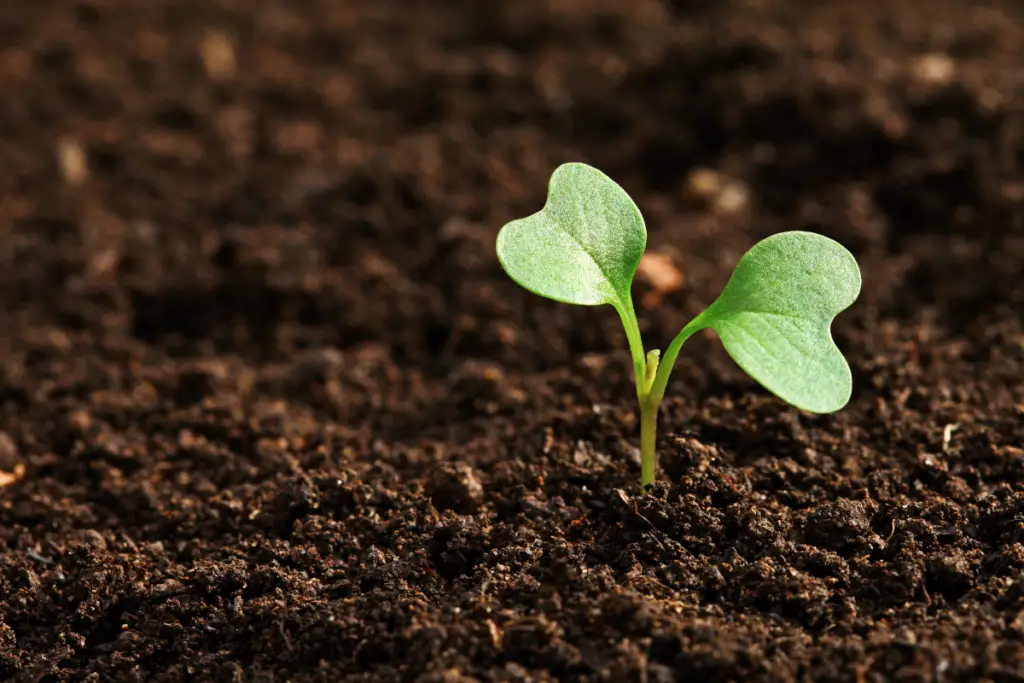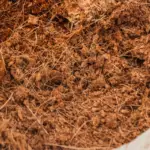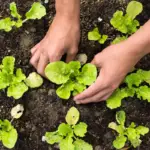Loamy soil is a type of soil that is composed of sand, silt, and clay in roughly equal proportions.
This type of soil is highly valued by gardeners and farmers because it has excellent drainage properties, retains moisture and nutrients, and promotes healthy root growth.
One of the primary uses of loamy soil is for gardening. Plants grown in loamy soil tend to be healthier and more productive than those grown in other types of soil.
This is because loamy soil provides plants with the perfect balance of drainage, moisture, and nutrients.
It also allows air to circulate around plant roots while protecting them from diseases caused by poorly drained soils.
Another use of loamy soil is for agriculture. Farmers often use loamy soil for growing crops because it is easy to till and provides a good growing environment for a wide variety of plants.
The nutrient-rich soil allows crops to grow quickly and produce high yields, making it a valuable resource for farmers around the world.

Table of Contents
Understanding Loamy Soil
Loamy soil is a type of soil that is highly valued by gardeners because of its ideal characteristics for plant growth.
By definition, loamy soil is a mixture of clay, sand, and humus (and/or silt) that is ideal for growing plants.
Its texture allows air to circulate plant roots, which protects against diseases often found in poorly draining compacted soils.
The soil texture allows roots to spread quickly, retain moisture, and obtain nutrients.
Characteristics of Loamy Soil
Loamy soil is a balanced mixture of sand, silt, and clay. It has a crumbly texture that is easy to work with, and it holds moisture well without becoming waterlogged.
Loamy soil is also rich in nutrients, which makes it an ideal growing medium for a wide range of plants.
Uses of Loamy Soil
- Planting Trees: Young trees prefer being grown in loam because the texture of the soil allows roots to spread quickly, retain moisture, and obtain nutrients needed to grow. Select a planting location with the proper daily light requirements for your tree.
- Vegetable Gardening: Loamy soil is ideal for growing vegetables because it provides good drainage, retains moisture, and is rich in nutrients. Vegetables such as tomatoes, peppers, and cucumbers thrive in loamy soil.
- Flower Gardening: Loamy soil is also ideal for growing flowers because it provides good drainage, retains moisture, and is rich in nutrients. Flowers such as roses, dahlias, and irises thrive in loamy soil.
Agricultural Uses of Loamy Soil
Loamy soil is a popular choice for agricultural purposes because of its unique composition. It is a mixture of sand, silt, and clay, which provides a balanced environment for plant growth.
Here are three agricultural uses of loamy soil:
Crop Cultivation
Loamy soil is ideal for growing a wide range of crops. It is rich in nutrients and has excellent water retention properties, which helps crops to grow and thrive.
It is particularly suitable for growing vegetables, fruits, and cereals. Farmers often use loamy soil to grow crops such as corn, wheat, and soybeans.
Horticulture Applications
Loamy soil is also popular in horticulture. It is used for growing flowers, shrubs, and trees.
The texture of loamy soil allows roots to spread quickly, retain moisture, and obtain nutrients needed for growth.
Young trees prefer being grown in loam because it allows them to establish themselves quickly.
Livestock Grazing Areas
Loamy soil is also suitable for grazing livestock. It provides a good environment for the growth of grass, which is an essential food source for many animals.
Farmers often use loamy soil for grazing cattle, sheep, and goats. It is also used for growing hay, which is an important feed for livestock during the winter months.
Environmental Uses of Loamy Soil
Loamy soil has a variety of uses, including environmental applications. Here are a few ways that loamy soil can be used to benefit the environment.
Erosion Control
Loamy soil is often used for erosion control because it is able to retain moisture and nutrients, while also allowing water to drain away.
This makes it an ideal soil type for planting vegetation that can help stabilize slopes and prevent erosion.
The roots of the plants help to hold the soil in place, while the loamy soil provides the necessary nutrients to support plant growth.
Water Filtration
Loamy soil is also used for water filtration because of its ability to retain and filter water.
The soil acts as a natural filter, removing impurities and pollutants from water as it passes through.
This makes it an important component of many natural water filtration systems, including wetlands and riparian zones.
In addition to its natural filtration properties, loamy soil can also be used in constructed wetlands to treat wastewater.
The soil provides a habitat for microorganisms that break down organic matter and remove pollutants from the water.
Loamy soil is a versatile soil type that has a variety of environmental uses, including erosion control and water filtration.
Its ability to retain moisture and nutrients while also allowing water to drain away makes it an ideal soil type for a wide range of environmental applications.
Construction Uses of Loamy Soil
Loamy soil is a versatile soil type that can be used in various construction applications.
Here are some of the construction uses of loamy soil:
Road Construction
Loamy soil is commonly used in road construction as a subgrade material.
It is an ideal material for road construction because it has good compaction properties and can provide a stable base for the road.
Loamy soil can also be used as a base material for road embankments and as a backfill material for retaining walls.
Brick Manufacturing
Loamy soil is also used in brick manufacturing. It is an important component of brick-making because it provides the necessary plasticity and workability to the clay.
Loamy soil can also enhance the durability and strength of the bricks.
In brick manufacturing, loamy soil is mixed with sand, clay, and water to form a clayey mixture.
The mixture is then molded into bricks and dried in the sun or fired in a kiln to produce durable and strong bricks.
Loamy soil is also used in the construction of earthen dams and levees. It is an ideal material for this purpose because it has good water retention properties and can provide stability to the structure.
Conclusion
In conclusion, loamy soil is a versatile and highly desirable type of soil that is widely used in agriculture, horticulture, and landscaping.
Its unique composition of sand, silt, and clay particles allows for good drainage, water retention, and nutrient retention, making it an excellent substrate for growing a variety of crops and plants.
Loamy soil is also ideal for constructing building foundations due to its stability and ability to support heavy loads.
Additionally, its aesthetic qualities make it a popular choice for landscaping projects, such as creating lawns and gardens.
However, it is important to note that loamy soil is not without its challenges, including the potential for erosion and compaction.
By understanding the uses and limitations of loamy soil, we can make informed decisions about how to best utilize this valuable resource while also preserving and protecting our natural environment.
- How to Dry Basil Leaves: A Professional Guide
- Is an Avocado a Fruit or Vegetable? Simple Answer and Explanation
- Does Pineapple Have Seeds? Exploring the Anatomy of Pineapples
- Blooming Through Winter: Can I Grow Vegetables Indoors in the Winter?
- What Can You Grow in a Greenhouse All Year Round: A Guide to Year-Round Greenhouse Gardening
- Are Blueberries Blue? Debunking the Myth of Their Color
















